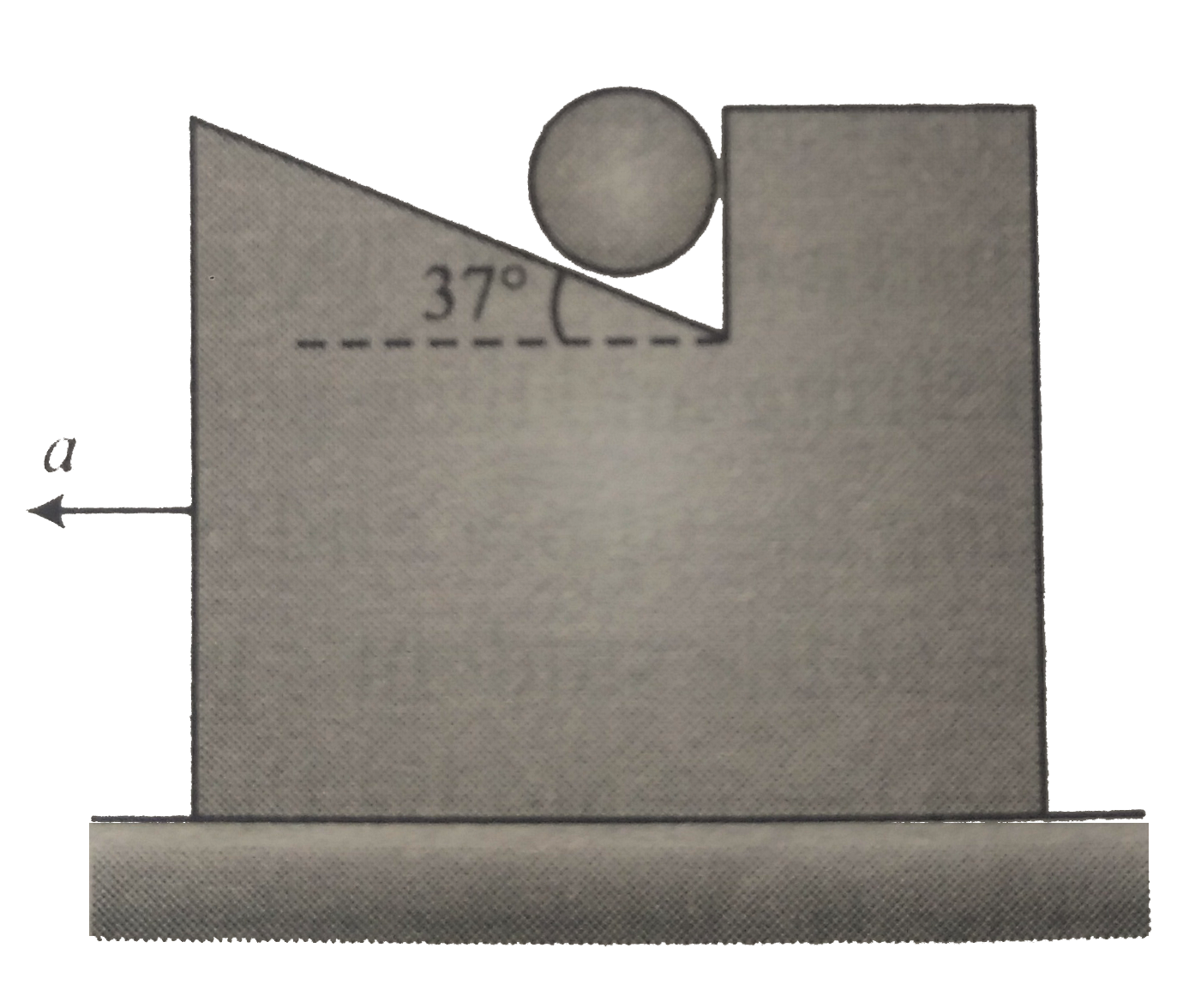Block A is given an acceleration 12ms−2 towards left as shown in fig. Assuming block B always remains horizontal, find the acceleration (in ms−2) of B.
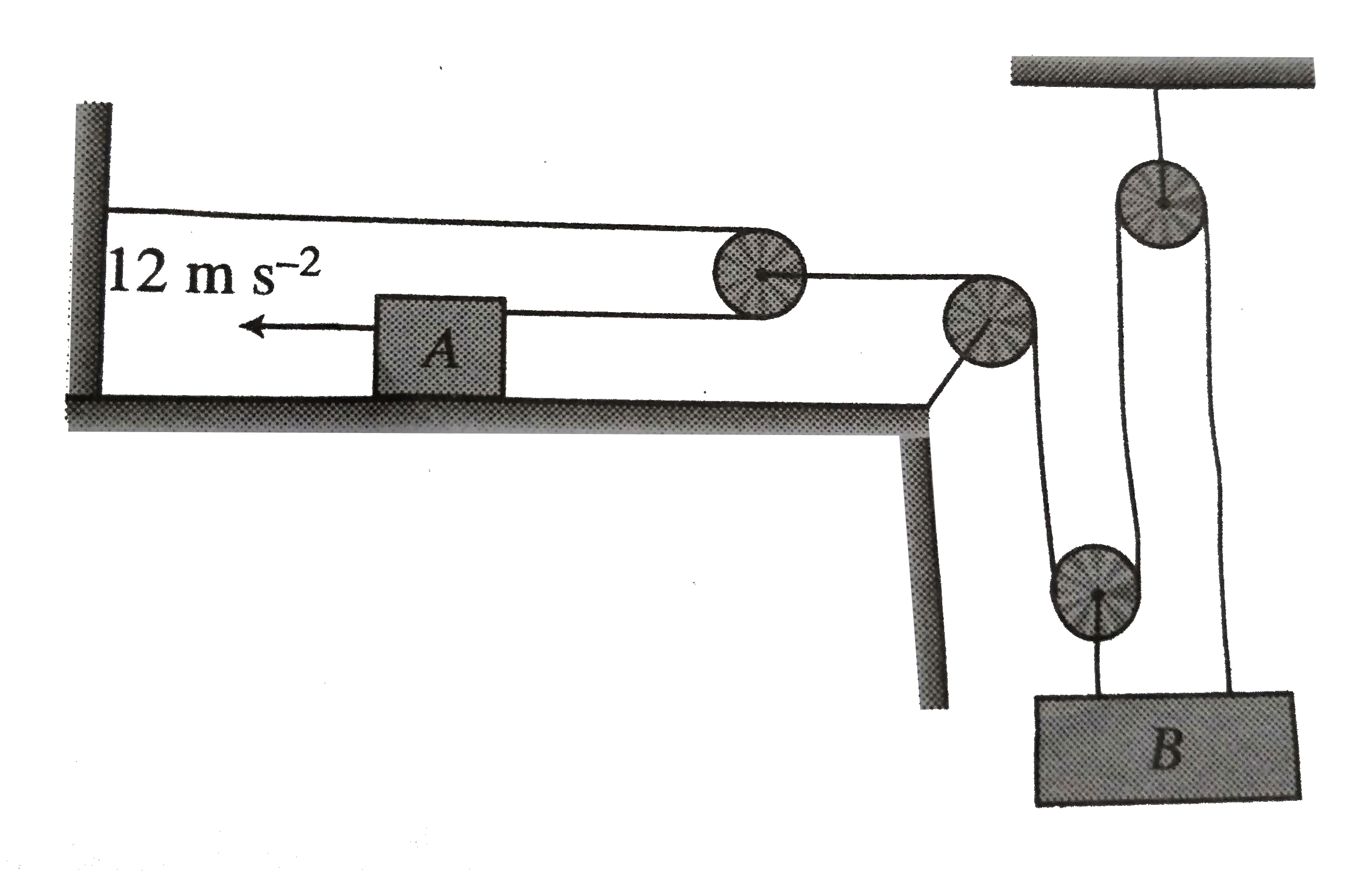
Sum of change in length of segment of string (1)
Should be zero⇒(−2xA)+(2xP1)=0
or xA=xP1⇒aA=aP1 ..(i)
Also sum of the change in segment length should also be sow
(−xp1+xB)+(xB)=0
2xB−xp1=0⇒2aB=ap1
From (1) and (2) aA=2aB
⇒aB=aA2=1ms−2.

Topper's Solved these Questions
- BOOK - CENGAGE PHYSICSCHAPTER - NEWTON'S LAWS OF MOTION 1EXERCISE - Exercise 6.413videos
NEWTON'S LAWS OF MOTION 1
- BOOK - CENGAGE PHYSICSCHAPTER - NEWTON'S LAWS OF MOTION 1EXERCISE - Subjective15videos
NEWTON'S LAWS OF MOTION 1
- BOOK - CENGAGE PHYSICSCHAPTER - NEWTON'S LAWS OF MOTION 1EXERCISE - Exercise 6.235videos
NEWTON'S LAWS OF MOTION 1
- BOOK - CENGAGE PHYSICSCHAPTER - MISCELLANEOUS VOLUME 2EXERCISE - INTEGER_TYPE10videos
MISCELLANEOUS VOLUME 2
- BOOK - CENGAGE PHYSICSCHAPTER - NEWTON'S LAWS OF MOTION 2EXERCISE - Integer type1videos
NEWTON'S LAWS OF MOTION 2
Similar Questions
Knowledge Check
- Question 1 - Select One
Wedge B is pulled by an acceleration 2g towards left. Find the acceleration of block A-
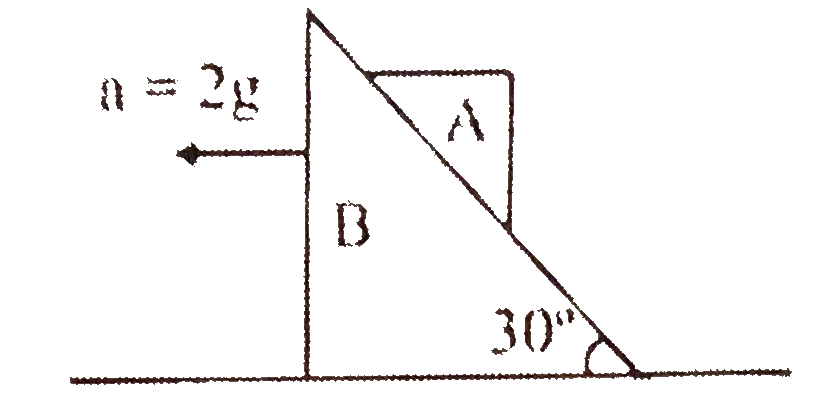 Agsin30∘+2gcos30∘Bg downwardsC2g towards rightDg√5
Agsin30∘+2gcos30∘Bg downwardsC2g towards rightDg√5 - Question 2 - Select One
If block A is moving with an acceleration of 5ms−2, the acceleration of B w.r.t. ground is
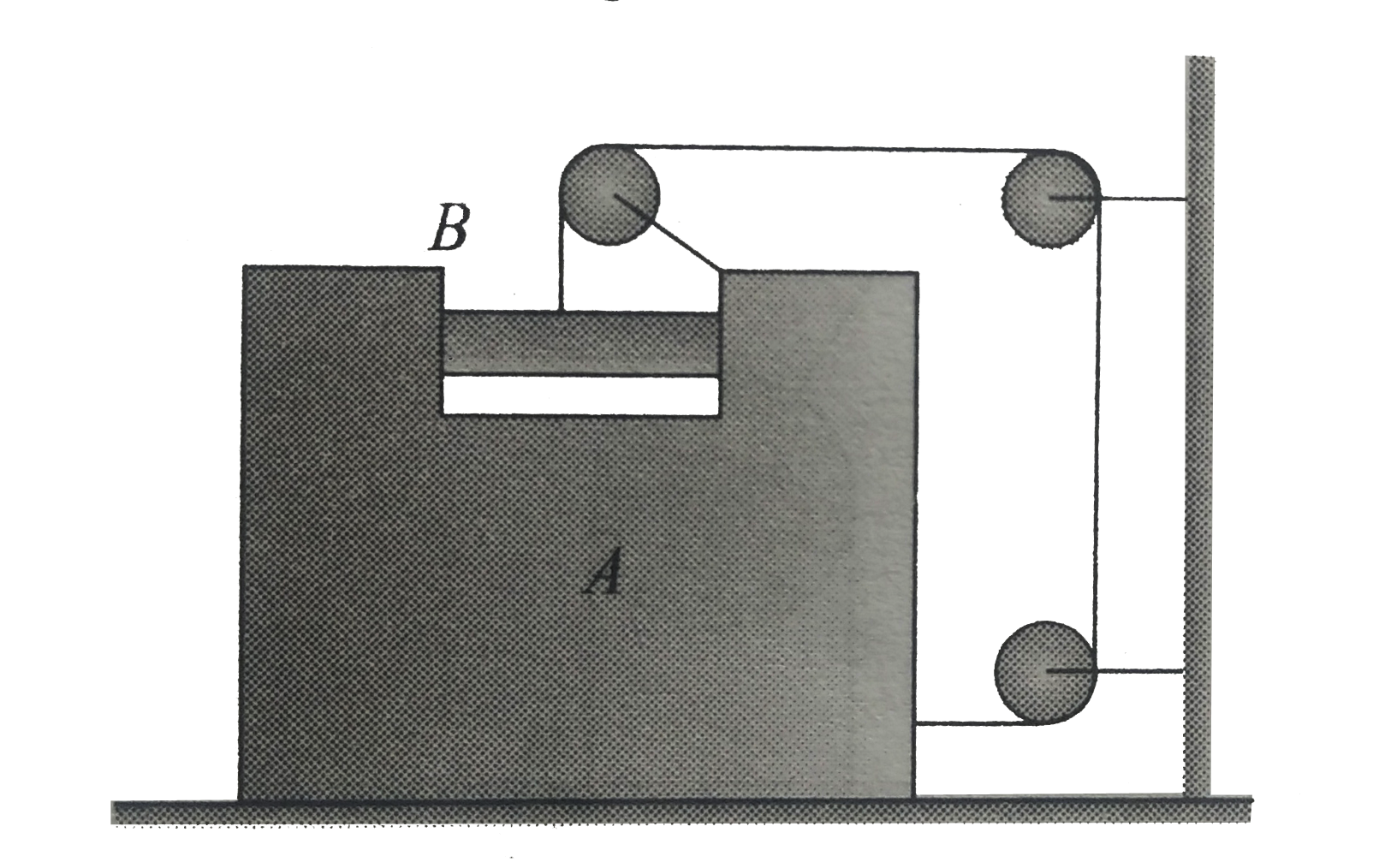 A5ms−2B5√2ms−2C5√5ms−2D10ms−2
A5ms−2B5√2ms−2C5√5ms−2D10ms−2 - Question 3 - Select One
If block B moves towards right with acceleration b, find the net acceleration of block A.
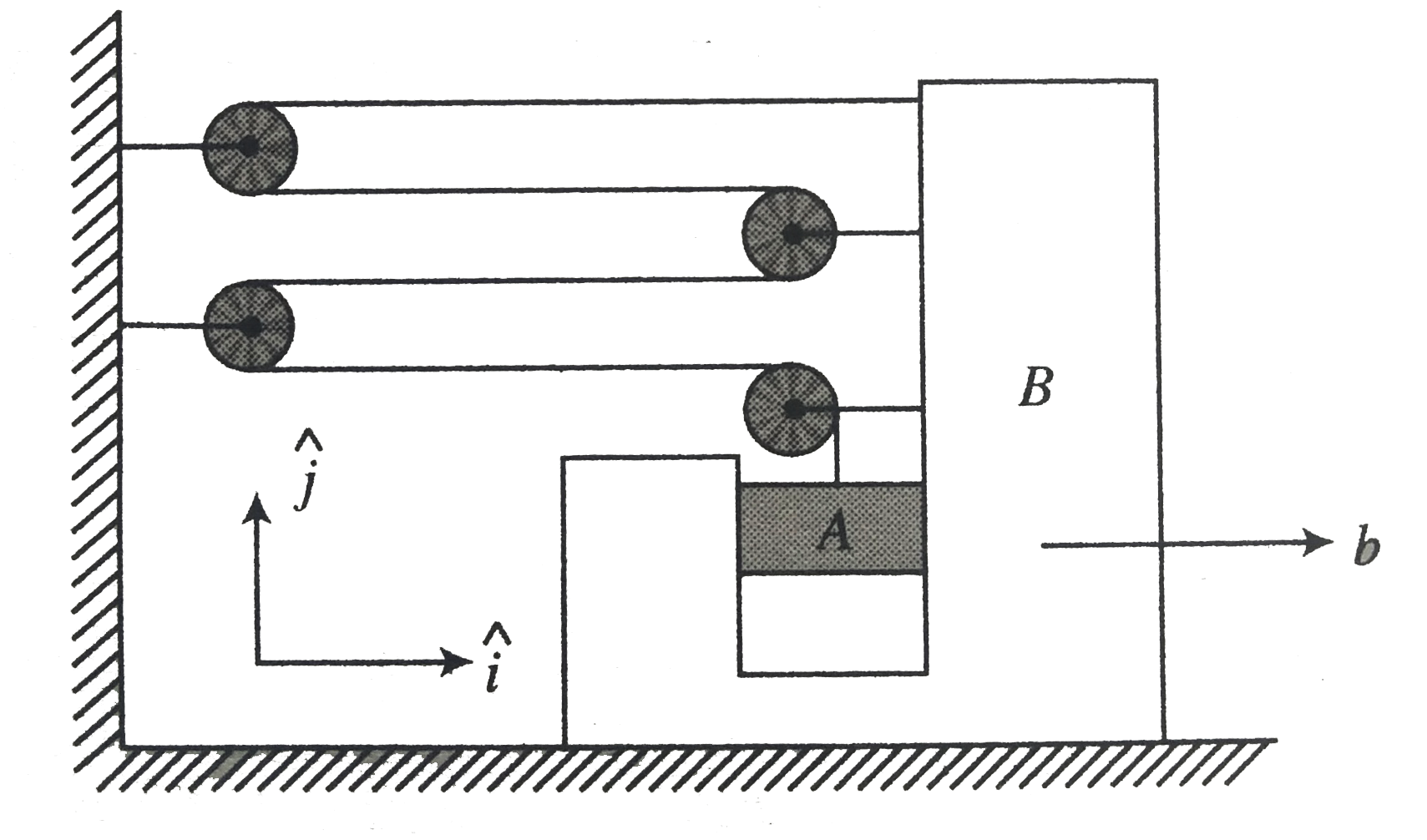 Abˆi+4bˆjBbˆi+bˆjCbˆi+2bˆjDNone of these
Abˆi+4bˆjBbˆi+bˆjCbˆi+2bˆjDNone of these
The system shown in the Fig. is given an acceleration 'a' towards left. Assuming all the surfaces to be frictionless, find the force on the sphere.
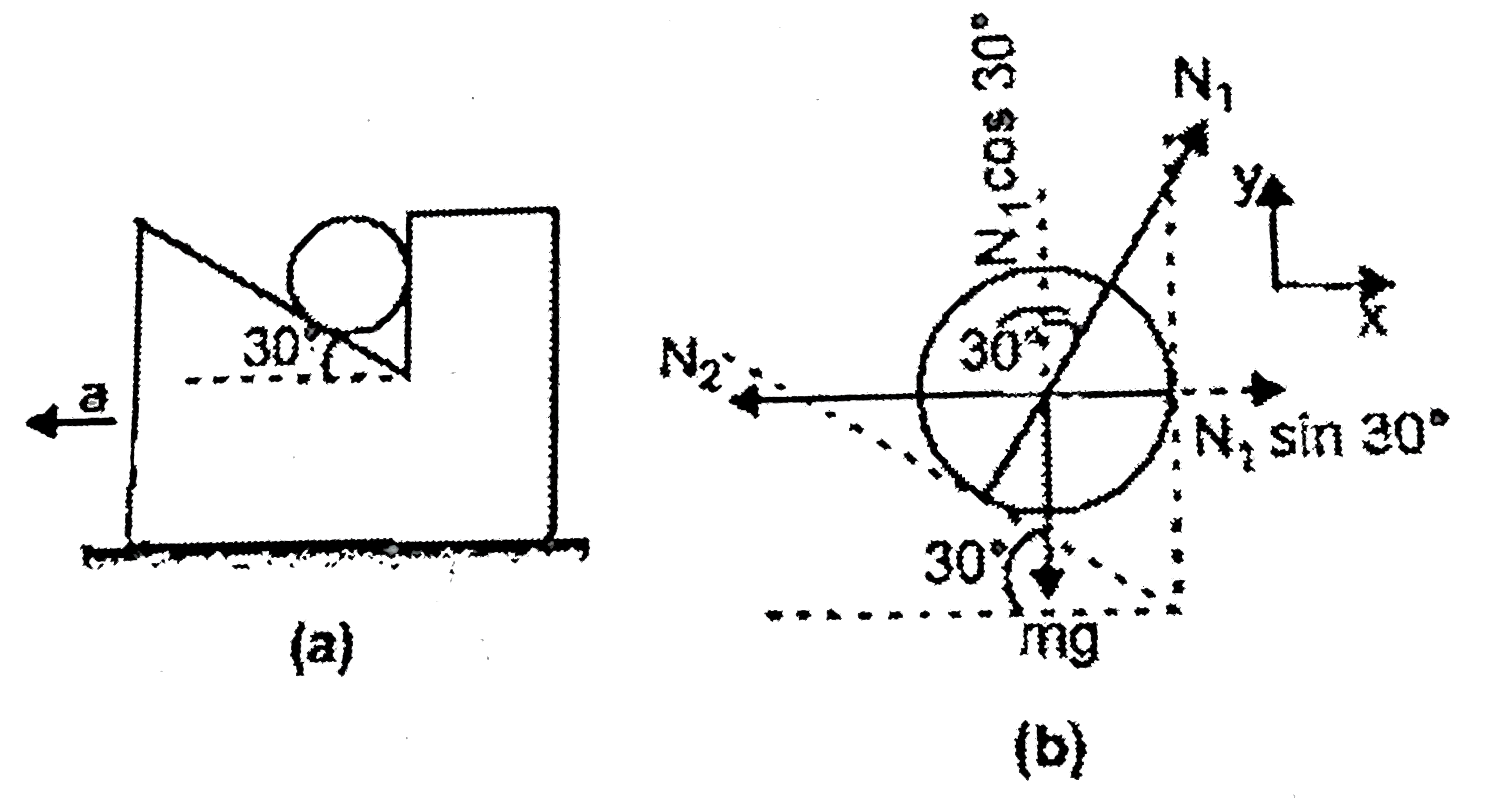 View Solution
View SolutionIn the system shown in figure, the block A is released from rest. Find
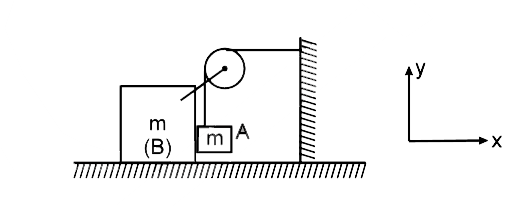
the acceleration of both blocks ‘A’ and ‘B’.View SolutionThe masses of the blocks A,B and C shown in fig (a) are 4kg,2kg and 2kg respectively Block A moves with an acceleration of 2.5ms−2
a. Block C is removed from its in position and placed on block A (b). What is now the acceleration of block C ?
b. The position of the block A and B subsequently interchanged find the new acceleration of C .The coefficient of friction in the same for all the conect surface View Solution
View SolutionBlock C shown in figure-1.79 is going down at acceleration 2m/s2. Find the acceleration of blocks A and B.
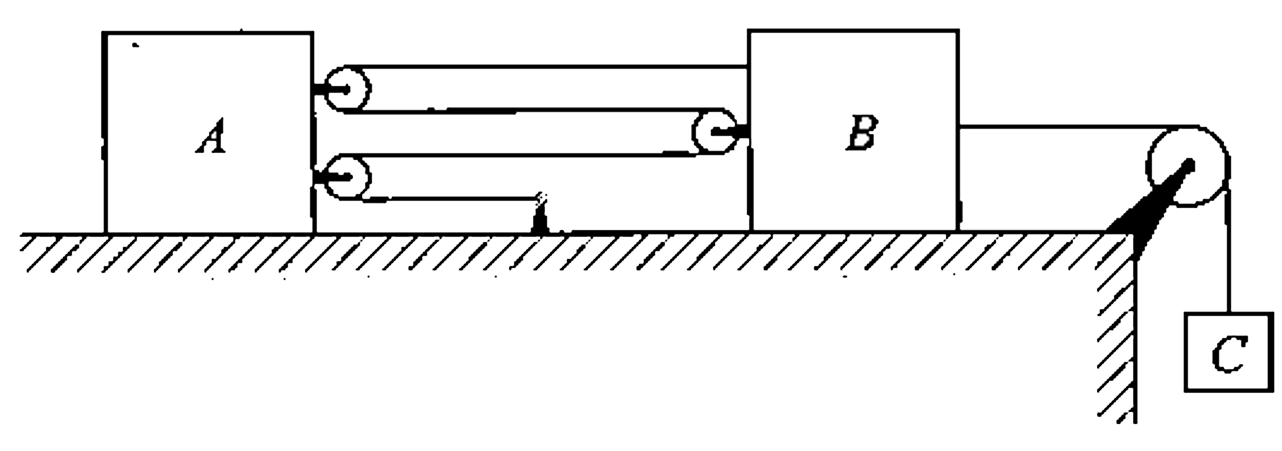 View Solution
View SolutionBlock A is moving with acceleration A along a frictionless horizontal surface. When a second block, B is placed on top of Block A the acceleration of the combined blocks drops to 1/5 the original value. What is the ratio of the mass of A to the mass of B?
View Solution


